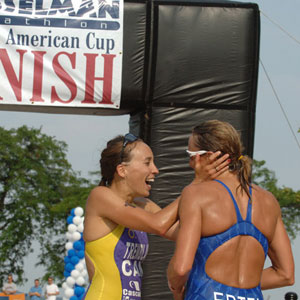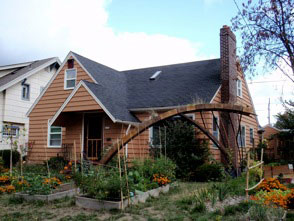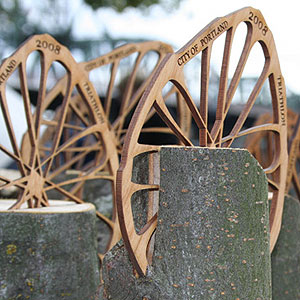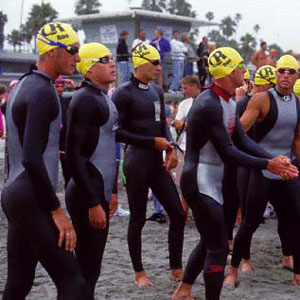On Beauty

"…a life's work in the agony and sweat of the human spirit, not for glory and least of all for profit, but to create out of materials of the human spirit something which did not exist before." –William Faulkner's Nobel acceptance speech (1950)
In 2007 the Musselman Triathlon was asked to stage a Pan American Cup for the first time. It was an honor; the plucky city of Geneva took its place alongside hosts San Francisco, Honolulu, Denver, and Des Moines for a draft-legal, professionals-only whirl through the downtown streets. Victor Plata, a former Olympian, thrilled the 10-deep finish-line crowd with victory, and I realized a dream – to direct a race at the highest levels of the sport.
In 2008, the Pan American Cup returned to Geneva and with it several Olympians using it as final prep before the late-summer Olympics in Beijing. Three Olympians made the start – Julie Ertel, Jarrod Shoemaker, Kathy Tremblay – and the weather responded with perfectly oppressive heat and humidity, the conditions expected in China. Toward the end of the scorching men's run, Jason Wilson found himself in a lockstep battle with Dave Kuendig for 9th place. Dave had swum more than half a minute faster than Jason, but Jason climbed back into the chase pack on the bike and proceeded to match Dave stride for stride on the run. Afternoon temperatures soared into the 90's beneath a blast furnace sun.
These men sharing a shadow were participating in a race sanctioned by the International Triathlon Union (ITU), a stepping-stone to the Olympic Games. As such, Pan American Cups (and their brethren World Cups and World Championships) are designed to be especially spectator-friendly. ITU wants to see loops, and it wants to see them in great abundance. Thus, the Musselman ITU Pan American Cup got itself dizzy with two laps for the swim, eight for the bike, and six for the run. Seldom a moment passed when an athlete was not in view, and the swim start, transition area, and finish line were steps from each other.

The crowd was able to watch in rapture as the battle unfolded on the course. Upon completing the sixth and final loop of Geneva's Lakefront Park, Jason teased out some daylight from Dave… but he forgot to turn into the finish chute. He streaked onto an extra seventh lap and left behind all hopes of clinching 9th place. Dave, however, knew that he had been bested and called for Jason to turn around, which he did, in short order. Dave paused long enough for Jason to pass, then they continued the few steps to the finish line in that order.
It had taken but an instant. But thousands of spectators had been witness to something special. In the rush of the moment, in the pulsing of adrenaline and crowd noise and oxygen-starved brain cells, Dave had enough presence of mind, and virtue, to honor the sport and his competitor.
The field of sport is alive with potential. Beauty arises unexpectedly, makes itself known at elusive moments, those times when human emotion is laid bare and we fall open to its possibility. It is the role of the race director to ready for these moments.
That same year the ITU was gracing Geneva with a Pan American Cup, the new Portland Triathlon found itself in need of a finish line. The finish is the focal point of any triathlon and carries with it the biggest potential for dramatic display. Typically blow-up arches are employed, massive structures able to be strung with banners and moved with ease. They are also, without fail, accompanied by the ever-present drone of gas generators.
For an event intent on embracing environmental sustainability, that wouldn't do. For one, we were attempting to use alternative energy (like solar) for power. A generator humming on fossil fuels would not only be antithesis to our vision, it would pollute with noise, an important (and often overlooked) element of the race site experience. Two, I just didn't think a bulky arch would be pretty in the middle of Waterfront Park, an oasis of green in downtown Portland.

I asked Aaron Loveitt, a friend and Portland artist who works in metal, glass, and wood, to create something new. He tinkered for a while, investigating discarded highway signs, various items dredged from the river that could charitably be called relics at best, and old bicycle parts. Ultimately he fashioned a work of art – there is no other way to describe it. With cedar planters and surplus steel he fused urban and rural; with native seedums growing from the top he brought it to life. The work was so original, so beautiful, I couldn't tuck it away into storage between editions of the annual triathlon. Instead it stands gracefully over my front yard 363 days a year; for two glorious days in August it perches majestically in Waterfront Park.
For all its beauty, it was expensive. An inflatable arch can run upwards of $5,000, depending on how big and fancy and custom you want it. Aaron's arch came in at $13,000, fully one-quarter of the first year event's total budget (and, it must be noted, a fraction of what it should have cost – Aaron knew I couldn't afford him).
It was worth every penny. The arch is my gift to finishers, and it touches people like only art can; it infuses the race with personality and the finish line with triumph. In the depths of January, while it watches over garlic and collards sprouting in the yard, passersby on the sidewalk pause and gaze up at it; cars slow on the street and small children duck behind mom's leg. It requires tending and water, or the vegetation growing from its planters will die; the steel weathers gently in the rain.
A national arts education public awareness campaign has put the message "Art – ask for more" on billboards across the country – perhaps you've seen them. They're advocating for more art in everyday life. And why not? What is art? It's anything that's beautiful, and it's different for everyone. You know it when you see it, and usually you can't take your eyes off it.
I believe that race directors have a responsibility to infuse beauty throughout their events, be it subtle or overt. You can create art by creating opportunity; given the chance to do so, human athletic competition will produce beauty in countless ways. David Kuendig produced his work of art through humility and sportsmanship; Aaron Loveitt created a masterpiece by looking at a typical piece of triathlon infrastructure with new eyes. Beauty exists in the symmetry of bike racks arrayedin a field, in a thousand black wetsuits and pink swim caps at water's edge, in a raw and ruddy smile given to a volunteer on a lonely hilltop far from the start. The Rightful Place of Beauty is everywhere – and it's up to us to cultivate it.
A long time ago a good friend gave me some good advice. He said that people won't remember what you tell them; they won't remember what you show them. They'll remember how you make them feel.
That advice hasn't let me down yet.




Start the discussion at slowtwitch.northend.network